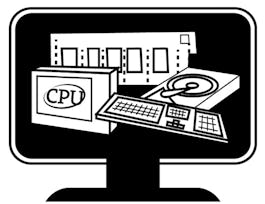Operations Research (OR) is a field in which people use mathematical and engineering methods to study optimization problems in Business and Management, Economics, Computer Science, Civil Engineering, Electrical Engineering, etc.



Operations Research (2): Optimization Algorithms

Instructor: 孔令傑 (Ling-Chieh Kung)
Sponsored by RIA PAYMENT INSTITUTION
16,793 already enrolled
(143 reviews)
Recommended experience
What you'll learn
Learn how to use algorithms to solve different types of optimization programs.
Learn how to use Gurobi solver with Python to solve these problems efficiently.
Skills you'll gain
Details to know

Add to your LinkedIn profile
6 assignments
See how employees at top companies are mastering in-demand skills


Earn a career certificate
Add this credential to your LinkedIn profile, resume, or CV
Share it on social media and in your performance review

There are 6 modules in this course
In the first lecture, we briefly introduce the course and give a quick review about some basic knowledge of linear algebra, including Gaussian elimination, Gauss-Jordan elimination, and definition of linear independence.
What's included
7 videos1 reading1 assignment
Complicated linear programs were difficult to solve until Dr. George Dantzig developed the simplex method. In this week, we first introduce the standard form and the basic solutions of a linear program. With the above ideas, we focus on the simplex method and study how it efficiently solves a linear program. Finally, we discuss some properties of unbounded and infeasible problems, which can help us identify whether a problem has optimal solution.
What's included
25 videos1 assignment
Integer programming is a special case of linear programming, with some of the variables must only take integer values. In this week, we introduce the concept of linear relaxation and the Branch-and-Bound algorithm for solving integer programs.
What's included
16 videos1 assignment
In the past two weeks, we discuss the algorithms of solving linear and integer programs, while now we focus on nonlinear programs. In this week, we first review some necessary knowledge such as gradients and Hessians. Second, we introduce gradient descent and Newton’s method to solve nonlinear programs. We also compare these two methods in the end of the lesson.
What's included
13 videos1 assignment
As the last lesson of this course, we introduce a case of NEC Taiwan, which provides IT and network solutions including cloud computing, AI, IoT etc. Since maintaining all its service hubs is too costly, they plan to rearrange the locations of the hubs and reallocate the number of employees in each hub. An algorithm is included to solve the facility location problem faced by NEC Taiwan.
What's included
12 videos1 assignment
In the final week, we review the topics that we have learned and give students a summary. Besides, we briefly preview the advanced course to provide future direction of studying.
What's included
3 videos1 assignment
Instructor

Offered by
Why people choose Coursera for their career




Learner reviews
143 reviews
- 5 stars
88.11%
- 4 stars
9.79%
- 3 stars
0.69%
- 2 stars
0.69%
- 1 star
0.69%
Showing 3 of 143
Reviewed on Feb 11, 2023
Good course. Have concrete examples with enough (but not too much) mathematical details. I like it a lot.
Reviewed on Sep 15, 2021
The Course was done earlier, hence, there was no one to answer the forums or questions, otherwise a very good course to learn about applying Python.
Reviewed on Aug 11, 2023
Great Experience and gained some knowledge about algorthims
Recommended if you're interested in Computer Science

Duke University

Columbia University

University of Illinois Urbana-Champaign

University of London

Open new doors with Coursera Plus
Unlimited access to 10,000+ world-class courses, hands-on projects, and job-ready certificate programs - all included in your subscription
Advance your career with an online degree
Earn a degree from world-class universities - 100% online
Join over 3,400 global companies that choose Coursera for Business
Upskill your employees to excel in the digital economy

